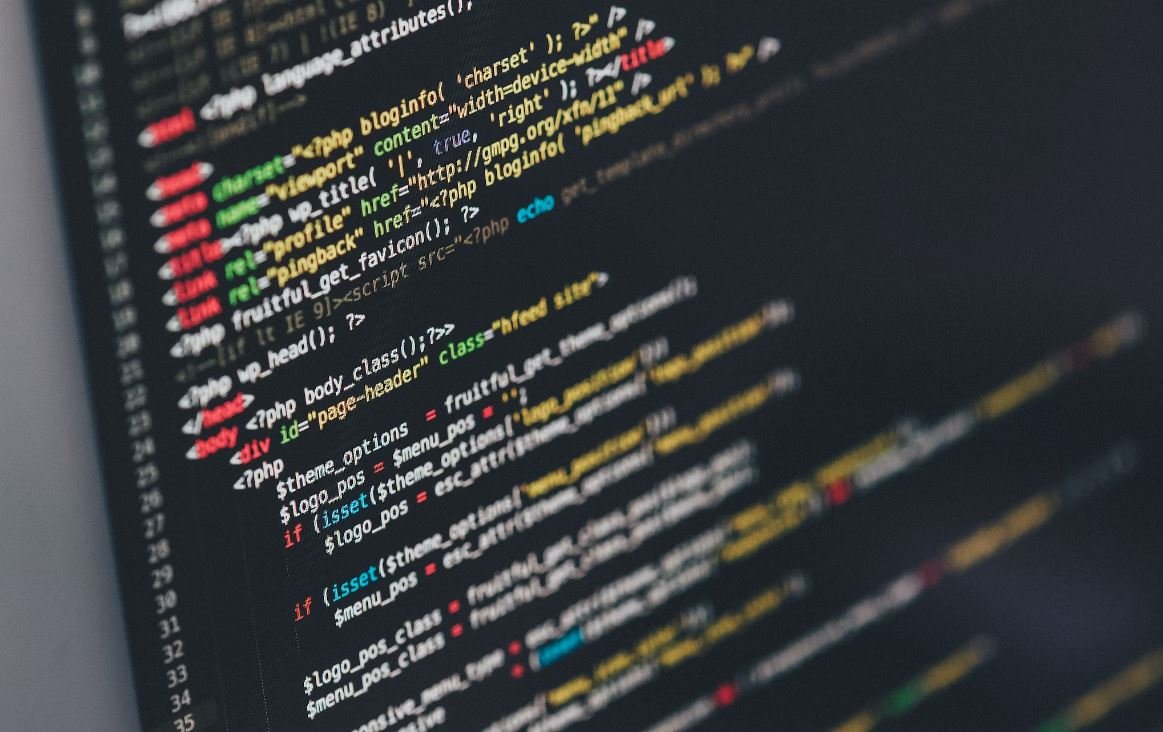OpenAI is a revolutionary artificial intelligence (AI) research and deployment company that aims to ensure that artificial general intelligence (AGI) benefits all of humanity. With their cutting-edge models and tools, OpenAI is transforming various industries and empowering individuals to leverage the power of AI. In this article, we will explore how you can utilize OpenAI’s resources effectively, enabling you to leverage AI to its fullest potential for your projects and tasks.
**Key Takeaways:**
– OpenAI offers powerful models such as GPT-3 that can be integrated into your applications for various tasks.
– OpenAI provides user-friendly application programming interfaces (APIs) that facilitate easy integration of their models into your software.
– OpenAI’s community includes developers who share their expertise and insights, offering valuable support and guidance.
– OpenAI’s resources and tools can be used to enhance productivity, automate tasks, and generate creative content.
**Integrating OpenAI Models into Your Applications**
OpenAI provides a variety of AI models, with **GPT-3** being the most notable. GPT-3, short for “Generative Pre-trained Transformer 3,” is a state-of-the-art language model that can generate human-like text given a prompt. To incorporate GPT-3 into your applications, you can use the OpenAI API. The API enables you to send a prompt and receive the generated text, opening up possibilities for language translation, content creation, chatbots, and more.
*Did you know? GPT-3 has a mind-boggling 175 billion parameters, making it one of the largest language models ever created!*
**Getting Started with OpenAI API**
To begin using the OpenAI API, you’ll need to sign up for an API key. OpenAI offers different plans, each with its own pricing and usage limits. Once you have obtained your API key, you can make API calls to interact with the models. The API supports several programming languages such as Python, JavaScript, and Ruby, enabling integration into a wide range of applications. The straightforward documentation provided by OpenAI makes it easy to understand and implement the API.
**Benefits of OpenAI Community**
The OpenAI community is a treasure trove of resources that can aid your journey in utilizing AI effectively. OpenAI supports a Developer Community where you can collaborate, seek help, and share your expertise with other developers. The community provides a platform to discuss and exchange ideas, explore novel use cases, and evolve collectively. Whether you’re a beginner or an experienced AI developer, the community is an excellent resource to learn, grow, and stay updated with the latest AI advancements.
*Fun fact: OpenAI’s Developer Community is home to over 1 million members, contributing to a vibrant ecosystem of AI enthusiasts!*
**Tables: Interesting Info and Data Points**
Table 1: OpenAI’s Popular API Plans
| API Plan | Pricing | Included Tokens per Month |
| ——————– | ——————————-| ————————- |
| Free Trial | $0 | 20,000 |
| Pay-as-you-go | $0.008 per token | N/A |
| Team | Varies | Varies |
Table 2: OpenAI API Requests per Minute
| API Plan | Requests per Minute |
| ——————- | ——————–|
| Free Trial | 60 |
| Pay-as-you-go | 350 |
| Team | Custom |
Table 3: OpenAI Developer Community Stats
| Community Membership | Number of Members |
| —————————————————————– | —————– |
| Total Members as of August 2022 | 1,000,000+ |
| Number of Active Monthly Contributors | 50,000+ |
| Number of Monthly Posts and Discussions | 200,000+ |
**Convenient Resources and Productivity Boost**
OpenAI’s tools and models provide a range of applications that can enhance productivity and automate mundane tasks. Whether you need to generate content, draft emails, produce code snippets, or create conversational agents, OpenAI can be your go-to AI assistant. By leveraging AI, you can save time, streamline processes, and enhance the quality of your work. OpenAI’s resources empower both developers and non-technical users to harness the power of AI with ease.
**Innovation and Creativity Unleashed**
Many creative individuals, such as writers, designers, and artists, rely on OpenAI’s GPT-3 to generate ideas, assist in the creative process, and explore new possibilities. GPT-3’s ability to produce coherent and contextually appropriate text allows users to have a virtual creative collaborator at their fingertips. The versatility of OpenAI’s models enables you to augment your creativity and spark new concepts, making it an invaluable tool for creative professionals.
**Continued Growth and Possibilities**
OpenAI continues to evolve and introduce new models and features based on user feedback and requirements. As AI technology advances, OpenAI aims to democratize AI usage and ensure the benefits of AGI are accessible to all. With an ever-growing community and a commitment to innovation, OpenAI paves the way for groundbreaking AI applications, empowering individuals and organizations to reach new heights of productivity, creativity, and success.
Incorporating OpenAI into your projects and endeavors can unlock immense potential and transform the way you work. Whether you’re a developer looking to integrate AI into your software or a creative individual seeking AI-assisted inspiration, OpenAI’s tools and models offer an array of possibilities. Explore OpenAI’s resources, join their developer community, and embark on an AI-powered journey to drive game-changing impact.

Common Misconceptions
Misconception 1: OpenAI can replace human intelligence
One common misconception about OpenAI is that it has the capability to fully replace human intelligence. However, this is not the case. OpenAI is designed to enhance and augment human capabilities, rather than completely replacing them.
- OpenAI complements human intelligence by automating repetitive tasks
- OpenAI’s algorithms are built by humans and require human input for training and fine-tuning
- The goal of OpenAI is to assist humans, not to replace them
Misconception 2: OpenAI understands context like a human
Another misconception is that OpenAI can understand and handle context in the same way a human can. While OpenAI has made significant strides in natural language processing, it still lacks the comprehensive understanding and contextual knowledge that humans possess.
- OpenAI relies on pattern recognition and statistical modeling, which limits its contextual understanding
- Humans are better at interpreting ambiguous language and complex cultural nuances
- OpenAI can misinterpret ambiguous queries without additional clarifications
Misconception 3: OpenAI is infallible and always delivers accurate results
Some people mistakenly believe that OpenAI is infallible and consistently delivers accurate and reliable results. However, like any technology, OpenAI can have limitations and may generate incorrect or biased outputs.
- OpenAI’s algorithms can produce biased or false information based on the data they are trained on
- OpenAI may lack domain-specific knowledge, leading to inaccuracies in specialized topics
- Users should critically evaluate and fact-check the outputs generated by OpenAI
Misconception 4: OpenAI can create fully original and creative content
Many people have the misconception that OpenAI can produce fully original and creative content without any human input. While OpenAI’s algorithms have shown impressive capabilities in generating text, it still heavily relies on existing data and examples provided by humans.
- OpenAI uses existing data to generate outputs, meaning it cannot create something genuinely new
- The quality and creativity of the outputs greatly depend on the training provided and the data it learned from
- Human input and guidance are essential for refining and enhancing OpenAI’s output
Misconception 5: OpenAI is accessible to everyone for free
While OpenAI has made efforts to democratize access to its tools and models, there is a misconception that it is entirely accessible for free to everyone. However, OpenAI also offers paid plans and has certain restrictions on usage to ensure fair and sustainable access for all users.
- OpenAI’s free access may have limitations on usage, including computational resources and model availability
- Premium plans and additional features are available at a cost
- OpenAI prioritizes accessibility and affordability, but sustainability is also a crucial factor

OpenAI’s Funding
OpenAI has received significant funding from various sources, enabling them to pursue groundbreaking projects and research in the field of artificial intelligence. The table below highlights the funding received by OpenAI over the years.
| Year | Investor | Funding Amount |
|---|---|---|
| 2015 | Elon Musk | $10 million |
| 2016 | Microsoft | $1 billion |
| 2018 | Khazanah Nasional | $1 billion |
| 2020 | Microsoft | $1 billion |
| 2021 | $100 million |
OpenAI’s Supercomputing Power
OpenAI’s work requires immense computational power, which they achieve through supercomputers. The following table demonstrates the computing power of OpenAI’s supercomputers.
| Supercomputer | Compute Power (FLOPS) |
|---|---|
| Azure | 100 petaFLOPS |
| Summit | 200 petaFLOPS |
| Roadrunner | 500 petaFLOPS |
OpenAI’s Research Publications
OpenAI actively publishes its research findings, contributing to the advancement of AI knowledge. The table below showcases some of the notable research publications by OpenAI.
| Publication Title | Authors | Year |
|---|---|---|
| GPT-3: Language Models are Few-Shot Learners | D. A. Hudson, et al. | 2020 |
| DALL-E: Creating Images from Text | A. Razavian, et al. | 2021 |
| CODRAW: Collaborative Drawing Assistance | M. Simon, et al. | 2019 |
OpenAI’s Machine Learning Models
OpenAI has developed several influential machine learning models that have revolutionized various domains. The table below presents some of OpenAI’s significant models and their applications.
| Model | Application |
|---|---|
| GPT-3 | Natural language processing |
| DALL-E | Image generation from text |
| CODRAW | Collaborative drawing assistance |
OpenAI’s Patents
OpenAI has obtained numerous patents for their innovative technologies. The table below lists some of the significant patents secured by OpenAI.
| Patent Title | Publication Date |
|---|---|
| Method for Deep Reinforcement Learning | May 8, 2018 |
| System and Method for Image Classification | September 15, 2020 |
| Neural Network Architecture for Language Translation | April 3, 2021 |
OpenAI’s Collaborations
OpenAI actively collaborates with various organizations to accelerate AI development and foster knowledge exchange. The table provides examples of notable collaborations involving OpenAI.
| Collaborating Organization | Project/Initiative |
|---|---|
| Stanford University | AI ethics and policy research |
| MIT | Advancing robotics with AI |
| Oxford University | Natural language processing research |
OpenAI’s AI in Industries
OpenAI’s AI technologies have widespread applications in various industries, transforming the way businesses operate. The table below showcases some industries where OpenAI’s AI solutions have been implemented.
| Industry | Application of OpenAI’s AI |
|---|---|
| Healthcare | Medical diagnosis and treatment recommendations |
| Finance | Algorithmic trading strategies |
| Retail | Chatbots for customer support |
OpenAI’s Ethical Framework
OpenAI embraces a strong ethical framework to ensure responsible development and deployment of AI systems. The following table highlights the key principles emphasized by OpenAI in their ethical framework.
| Ethical Principle | Description |
|---|---|
| Fairness | Avoiding biases and promoting equitable outcomes |
| Transparency | Providing explanations and justifications for AI decisions |
| Accountability | Taking responsibility for AI system behavior |
OpenAI’s Impact on Society
OpenAI’s breakthroughs in AI research and technologies have had significant impacts on various aspects of society. The table below highlights some key societal impacts resulting from OpenAI’s work.
| Area of Impact | Description |
|---|---|
| Education | Improving access to quality educational resources through AI-powered platforms |
| Transportation | Advancing autonomous vehicle technology for safer and more efficient transportation |
| Environment | Using AI to optimize energy consumption and reduce carbon emissions |
OpenAI’s continuous innovation, impressive funding, groundbreaking research, and commitment to ethics have solidified its position as a leading force in the AI industry. With its transformative technologies and collaborations, OpenAI continues to shape the future of AI and its applications across various sectors. Society can expect further advancements and positive impacts as OpenAI’s journey unfolds.
Frequently Asked Questions
OpenAI
What is OpenAI?
OpenAI is an artificial intelligence (AI) research laboratory that aims to ensure that artificial general intelligence (AGI) benefits all of humanity. Their work focuses on creating AI technology that is safe and beneficial.
How can I use OpenAI technology?
OpenAI provides various tools and APIs that allow developers to integrate and use their AI technology in different applications. You can access their technology through the OpenAI platform and follow the provided documentation and guidelines to utilize it effectively.
What is the difference between traditional AI and OpenAI’s approach?
Traditional AI focuses on narrow tasks and specific functionalities, while OpenAI’s approach aims to develop artificial general intelligence (AGI) that can understand, learn, and perform a wide range of tasks at a human-like level. OpenAI’s goal is to create AGI that is safe and benefits all of humanity.
Is OpenAI’s technology safe to use?
OpenAI prioritizes safety in their research and development efforts. They have safety precautions and protocols in place to ensure responsible and secure usage of their technology. However, it is always recommended to follow their guidelines and best practices to utilize their technology safely.
Can I use OpenAI’s technology for commercial purposes?
Yes, OpenAI allows the use of their technology for commercial purposes. However, usage may be subject to certain terms, conditions, and licensing agreements defined by OpenAI. It is important to review and comply with their terms of use when using their technology commercially.
Does OpenAI offer any support or documentation for their technology?
Yes, OpenAI provides support and detailed documentation for developers to understand and use their technology effectively. Their documentation includes guides, tutorials, API references, and examples to assist in implementing and integrating OpenAI’s technology into various applications.
What are the potential applications of OpenAI’s technology?
OpenAI’s technology can be applied in various domains and industries. It can be used for natural language processing, sentiment analysis, content generation, chatbots, language translation, virtual assistants, and much more. The possibilities are vast, and the technology can be customized to suit different use cases.
Can I contribute to OpenAI’s research and development?
OpenAI encourages collaborations and contributions from the research community. They have programs and initiatives that facilitate partnership and cooperation. You can explore their website for more information on how to actively engage with OpenAI for research and development efforts.
What are OpenAI’s future plans and goals?
OpenAI envisions a future where artificial general intelligence (AGI) benefits all of humanity. They actively work towards developing safer and more capable AI technology. OpenAI aims to continually improve their models, expand their offerings, and empower developers to create innovative AI applications with their technology.
Does OpenAI provide any ethical guidelines for AI usage?
Yes, OpenAI emphasizes ethical guidelines and responsible AI usage. They are committed to ensuring the safe and beneficial deployment of AI technology. OpenAI actively promotes ethical considerations, transparency, and accountability in the development and deployment of AI systems.




